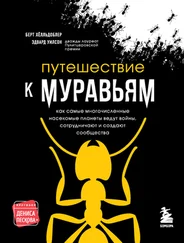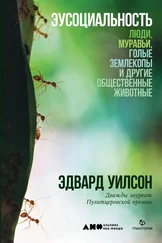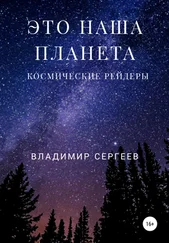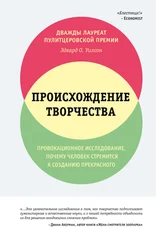Tudge, C. 2000. The Variety of Life: A Survey and a Celebration of All the Creatures That Have Ever Lived (New York: Oxford University Press).
Wilson, E. O. 1993. The Diversity of Life: College Edition (New York: W. W. Norton).
Wilson, E. O. 2013. Beware the age of loneliness. The Economist "The World in 2014," p. 143.
4. Плач по носорогам
Platt, J. R. 2015. How the western black rhino went extinct. Scientific American Blog Network, January 17, 2015.
Roth, T. 2004. A rhino named "Emi." Wildlife Explorer (Cincinnati Zoo & Botanical Gardens), Sept/Oct: 4–9.
Martin, D. 2014. Ian Player is Dead at 87; helped to save rhinos. New York Times, December 5, p. B15.
5. Апокалипсис сегодня
Laurance, W. F. 2013. The race to name Earth's species. Science 339 (6125): 1275.
Sax, D. F., and S. D. Gaines. 2008. Species invasions and extinction: The future of native biodiversity on islands. Proceedings of the National Academy of Sciences U. S. A. 105 (suppl. 1): 1490–1497.
6. Мы — боги ?
Brand, S. 1968. "We are as gods and might as well get good at it." In Whole Earth Catalog (Published by Stewart Brand).
Brand, S. 2009. "We are as gods and HAVE to get good at it." In Whole Earth Discipline: An Ecopragmatist Manifesto (New York: Viking).
7. Почему темп вымирания растет
Laurance, W. F. 2013. The race to name Earth's species. Science 339 (6125): 1275.
Hoffman, M., et al. 2010. The impact of conservation on the status of the world's vertebrates. Science 330 (6010): 1503–1509.
Sax, D. F., and S. D. Gaines. 2008. Species invasions and extinction: The future of native biodiversity on islands. Proceedings of the National Academy of Sciences U. S. A. 105 (suppl. 1): 1490–1497.
8. Влияние изменения климата: на суше, в море и в воздухе
Banks-Leite, C., et al. 2012. Unraveling the drivers of community dissimilarity and species extinction in fragmented landscapes. Ecology 93 (12): 2560–2569.
Botkin, D. B., et al. 2007. Forecasting the effects of global warming on biodiversity. BioScience 57 (3): 227–236.
Burkhead, N. M. 2012. Extinction rates in North American freshwater fishes, 1900–2010. BioScience 62 (9): 798–808.
Carpenter, K. E., et al. 2008. One-third of reef-building corals face elevated extinction risk from climate change and local impacts. Science 321 (5888): 560–563.
Cicerone, R. J. 2006. Finding Climate Change and Being Useful. Sixth annual John H. Chafee Memorial Lecture (Washington, DC: National Council for Science and the Environment).
Culver, S. J., and P. F. Rawson, eds. 2000. Biotic Response to Global Change: The Last 145 Million Years (New York: Cambridge University Press).
De Vos, J. M., et al. 2014. Estimating the normal background rate of species extinction. Conservation Biology 29 (2): 452–462.
Duncan, R. P., A. G. Boyer, and T. M. Blackburn. 2013. Magnitude and variation of prehistoric bird extinctions in the Pacific. Proceedings of the National Academy of Sciences U. S. A. 110 (16): 6436–6441.
Dybas, C. L. 2005. Dead zones spreading in world oceans. BioScience 55 (7): 552–557.
Erwin, D. H. 2008. Extinction as the loss of evolutionary history. Proceedings of the National Academy of Sciences U. S. A. 105 (suppl. 1): 11520–11527.
Estes, J. A., et al. 2011. Trophic downgrading of planet Earth. Science 333 (6040): 301–306.
Gillis, J. 2014. 3.6 degrees of uncertainty. New York Times, December 16, 2014, p. D3.
Hawks, J. 2012. Longer time scale for human evolution. Proceedings of the National Academy of Sciences U. S. A. 109 (39): 15531–15532.
Herrero, M., and P. K. Thornton. 2013. Livestock and global change: Emerging issues for sustainable food systems. Proceedings of the National Academy of Sciences U. S. A. 110 (52): 20878–20881.
Jackson, J. B. C. 2008. Ecological extinction in the brave new ocean. Proceedings of the National Academy of Sciences U. S. A. 105 (suppl. 1): 11458–11465.
Jeschke, J. M., and D. L. Strayer. 2005. Invasion success of vertebrates in Europe and North America. Proceedings of the National Academy of Sciences U. S. A. 102 (20): 7198–7202.
Laurance, W. F., et al. 2006. Rapid decay of tree-community composition in Amazonian forest fragments. Proceedings of the National Academy of Sciences U. S. A. 103 (50): 19010–19014.
LoGuidice, K. 2006. Toward a synthetic view of extinction: A history lesson from a North American rodent. BioScience 56 (8): 687–693.
Lovejoy, T. E., and L. Hannah, eds. 2005. Climate Change and Biodiversity (New Haven, CT: Yale University Press).
Mayhew, P. J., G. B. Jenkins, and T. G. Benton. 2008. A long-term association between global temperature and biodiversity, origination and extinction in the fossil record. Proceedings of the Royal Society of London B 275: 47–53.
McCauley, D. J., et al. 2015. Marine defaunation: Animal loss in the global ocean. Science 347 (6219): 247–254.
Millennium Ecosystems Assessment. 2005. Ecosystems and Human Well Being, Synthesis. Summary for Decision Makers, 24 pp.
Pimm, S. L., et al. 2014. The biodiversity of species and their rates of extinction, distribution, and protection. Science 344 (6187): 1246752–1–10 (doi:10.1126/science.1246752).
Pimm, S. L., and T. Brooks. 2013. Conservation: Forest fragments, facts, and fallacies. Current Biology 23: R1098, 4 pp.
Stuart, S. N., et al. 2004. Status and trends of amphibian declines and extinctions worldwide. Science 306 (5702): 1783–1786.
The Economist. 2014. Deep water. February 22.
Thomas, C. D. 2013. Local diversity stays about the same, regional diversity increases, and global diversity declines. Proceedings of the National Academy of Sciences U. S. A. 110 (48): 19187–19188.
Urban, M. C. 2015. Accelerating extinction risk from climate change. Science 348 (6234): 571–573.
Vellend, M., et al. 2013. Global meta-analysis reveals no net change in local-scale plant biodiversity over time. Proceedings of the National Academy of Sciences USA. 110 (48): 19456–19459.
Wagg, C., et al. 2014. Soil biodiversity and soil community composition determine ecosystem multifunctionality. Proceedings of the National Academy of Sciences U. S. A. 111 (14): 5266–5270.
9. Самая опасная картина мира
Crist, E. 2013. On the poverty of our nomenclature. Environmental Humanities 3: 129–147.
Ellis, E. 2009. Stop trying to save the planet. Wired, May 6.
Kolata, G. 2013. You're extinct? Scientists have gleam in eye. New York Times, March 19.
Kumar, S. 2012. Extinction need not be forever. Nature 492 (7427): 9.
Marris, E. 2011. Rambunctious Garden: Saving Nature in a Post-Wild World (New York: Bloomsbury).
Revkin, A. C. 20i 2. Peter Kareiva, an inconvenient environmentalist. New York Times, April 3.
Rich, N. 2014. The mammoth cometh. New York Times Magazine, February 27.
Thomas, C. D. 2013. The Anthropocene could raise biological diversity. Nature 502 (7469): 7.
Murcia, C., et al. 2014. A critique of the "novel ecosystem" concept. Trends in Ecology and Evolution 29 (10): 548–553.
Voosen, P. 2012. Myth-busting scientist pushes greens past reliance on "horror stories." Greenwire, April 3.
Wuerthner, G., E. Crist, and T. Butler, eds. 2015. Protecting the Wild: Parks and Wilderness, the Foundation for Conservation (Washington, DC: Island Press).
Zimmer, C. 2013. Bringing them back to life. National Geographic 223 (4): 28–33, 35–41.
ЧАСТЬ II. НАСТОЯЩИЙ МИР ЖИВОГО
10. Наука о сохранении природы
Читать дальше
Конец ознакомительного отрывка
Купить книгу
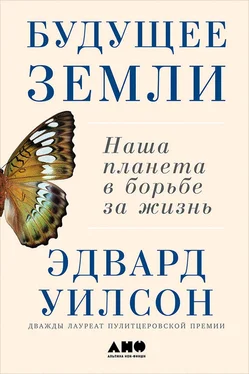
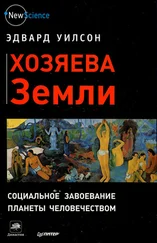
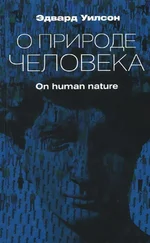

![Эдвард Уилсон - Эусоциальность [Люди, муравьи, голые землекопы и другие общественные животные] [litres]](/books/407117/edvard-uilson-eusocialnost-lyudi-muravi-golye-thumb.webp)
